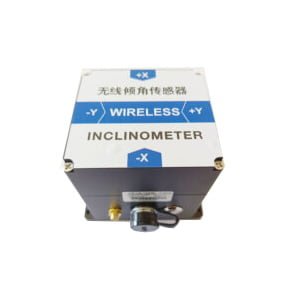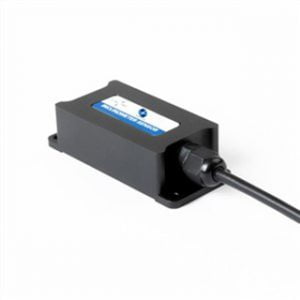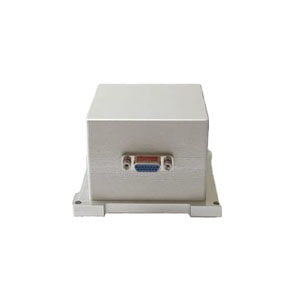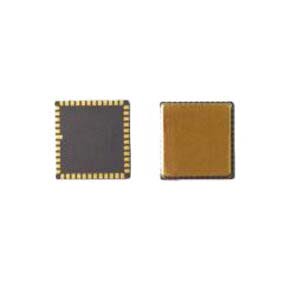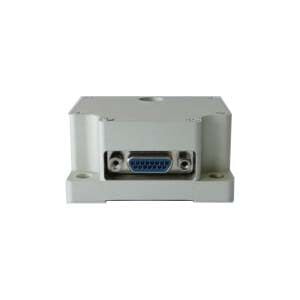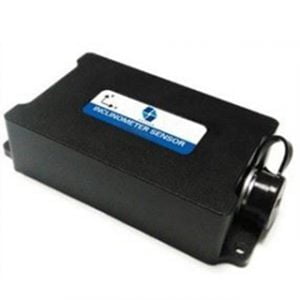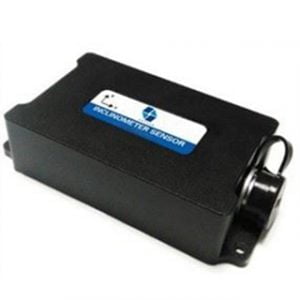Analog Type Two Axis Tilt Sensor
Introduction
This is a standard industrial full temperature compensation high-precision analog output dual-axis tilt sensor, using standard voltage 0~5V, 0~10V, current 4~20mA, 0~20mA, 0~24mA (optional). At the same time, through RS232/CAN output, it can reach 2000 meters long distance transmission. The operator only needs to collect the voltage value of the sensor to calculate the current tilt angle of the object. The built-in (MEMS) solid pendulum can be converted into the change of the inclination angle by measuring the change of the static gravity field.
Using MEMS sensor production technology, it can accurately compensate and correct temperature errors and linear errors. It has the characteristics of high precision, small size, high packaging technology and strong vibration resistance. Due to the built-in anti-radio frequency and anti-electromagnetic interference circuit, it is especially suitable for applications in harsh industrial environments such as underground non-excavation machinery.
Features
Two axis tilt monitoring
Full range accuracy 0.001°, resolution 0.0005°
Output 0~5V, 4~20mA (optional)
Wide-voltage input DC 11~36V
Wide temperature working -40~+85℃
Range 0~±5/±10/±15/±30° (optional)
High vibration resistance>20000g
IP67 protection
Output RS232 at the same time
Volume (107*55*27mm) (customizable)
Applications
High voltage wire tower monitoring
Satellite solar antenna positioning
Aerial work truck
Mining machinery, oil logging equipment
Medical equipment
Hydraulic lifting platform
Inclination monitoring
Angle control of various construction machinery
Inspection of bridges and dams
Specifications
| Parameter | Condition | ER-TS-1228AN-5 | ER-TS-1228AN-10 | ER-TS-1228AN-15 | ER-TS-1228AN -30 | Unit |
| Measuring range | / | ±5 | ±10 | ±15 | ±30 | ° |
| Measurement axis | / | X ,Y axis | X ,Y axis | X ,Y axis | X ,Y axis | / |
| Zero temperature drift | -40~85° | ±0.0005 | ±0.0005 | ±0.0005 | ±0.0005 | °/℃ |
| Sensitivity temperature coefficient | -40~85° | ≤50 | ≤50 | ≤50 | ≤50 | ppm/℃ |
| Zero drift | 0°output | 4~20mA output -12mA,0~20mAoutput -10mA, 0~24mAoutput -12mA | mA | |||
| Frequency response | DC response | 100 | 100 | 100 | 100 | Hz |
| Resolution | Bandwidth5Hz | 0.0005 | 0.0005 | 0.0005 | 0.0005 | ° |
| Accuracy | -40~85℃ | 0.001 | 0.002 | 0.003 | 0.005 | ° |
| Power on start time | / | 0.2 | 0.2 | 0.2 | 0.2 | s |
| Response time | / | 0.01 | 0.01 | 0.01 | 0.01 | s |
| Output signal | 4~20mA, 0~20mA, 0~24mA | |||||
| Average working time | ≥45000 hours/time | |||||
| Impact resistant | 20000g, 0.5ms, 3 times/axis | |||||
| Shock resistant | 10grms, 10~1000Hz | |||||
| Insulation resistance | ≥100MΩ | |||||
| Waterproof level | IP67 | |||||
| Cable | Standard 1.5 m length, wear resistance, oil proof, wide temperature, shielding cable 6*0.3mm² | |||||
| Weight | 250g (excluding boxes) | |||||
Application Techniques
1.The Difference between Tilt Sensor and Gyro Sensor
3.How to install the tilt sensor?
4.What are Tilt Switches and Tilt Sensors?
5.How to Use the Tilt Sensor and How to Install It?
6.Do you Know the Working Principle of Inclinometer ?
More Products
